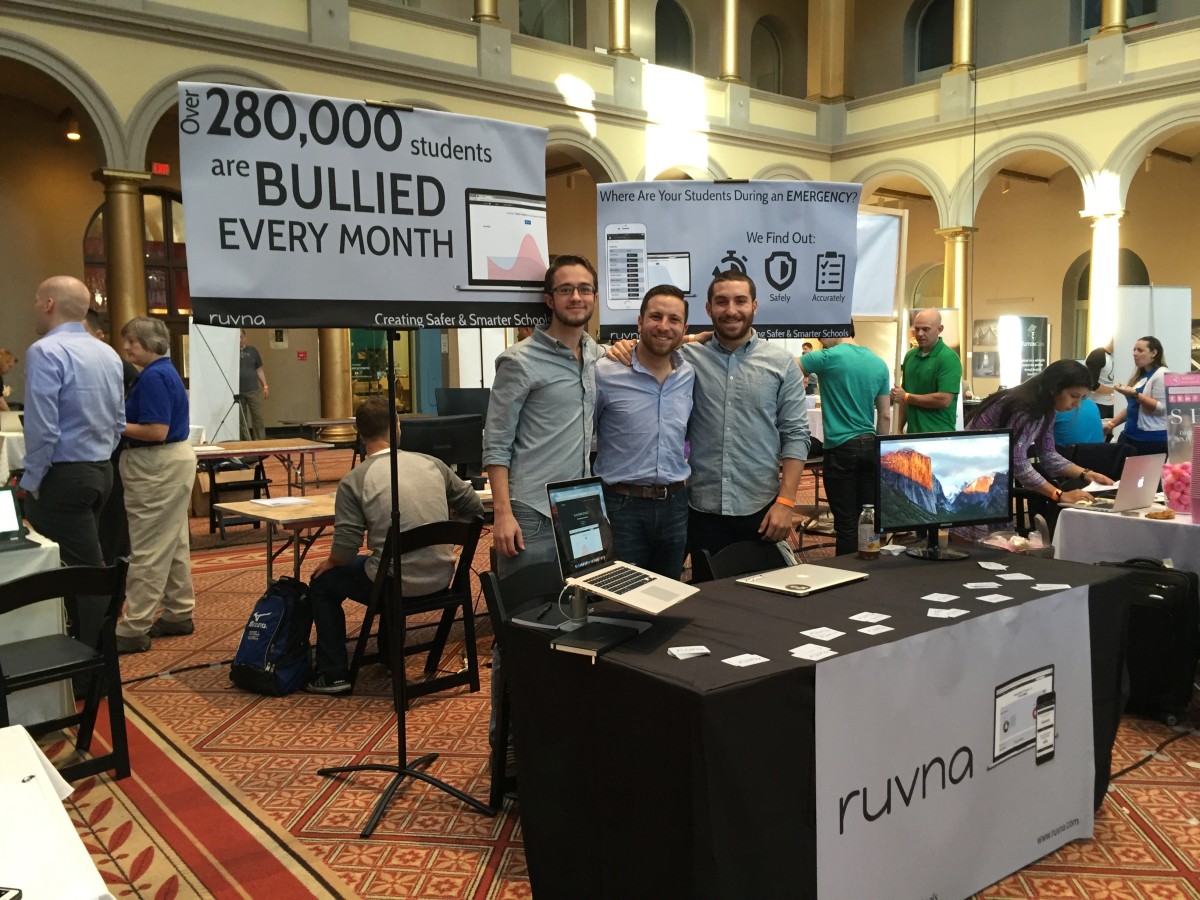Creating multiple products can be a great way to grow and diversify your business. But for a young startup multiple products can also serve to complicate the story you’re telling journalists and investors — part of being successful is knowing when, how and on what to focus.
When we last checked in with ruvna it was a young, hungry school safety startup run out of the American University incubator with two live products and the desire to create more. “We very intentionally call ourselves a platform,” CEO Joey Nutinsky told Technical.ly at the time. “Right now we have two awesome products, but there are definitely more ways to make schools smarter and safer.”
Now ruvna’s a young, hungry school safety startup based in New York (for now) and learning to tell a focused, compelling story.
The ruvna team applied to Dreamit’s New York-based edtech accelerator, and, when they were accepted, Nutinsky and his cofounder and CTO Jack Ruppel dropped out of school and moved to the big city. Once they arrived, they realized a few things.
“Those two products,” Nutinsky said, of ‘ruvna core’ and ‘ruvna emergency,’ “really were very separate from each other. We realized we were telling two different stories, and only one of the stories was really grabbing people’s attention.”

So the team sat down and decided to get real — they dropped ruvna core (the discipline product) to focus on ruvna emergency, a product that easily allows teachers and school administrators to account for students in the case of a school emergency.
“We decided to own the one story we were telling really well,” Nutinsky said. And, according to Nutinsky, “we’re very happy with the decision we made.”
Unfortunately perhaps, ruvna emergency strikes a chord. Schools aren’t always as safe as we’d like them to be — a FEMA study from 2014 found that, between 2009 and 2011, there were around 4,000 school building fires every year. And research from Everytown for Gun Safety cites 188 school shootings since 2013 (this includes secondary and well as post-secondary institutions).
So when Nutinsky tells schools he’s got a way to make emergency situations a little bit easier to manage, he’s got their attention.
Nutinsky told Technical.ly he’s been “living on the subway,” visiting private schools all over New York. And it has paid off — the company is currently in negotiations with 20 schools for roll out in fall 2016. The team hopes, conservatively, that they’ll make it into 10 of those schools.
And what’s next for ruvna? The Dreamit experience ends next week, but the team plans to stay in New York until at least September to help with in-person training and implementation of their technology in schools. Nutinsky is also focused on fundraising — the only outside capital the company has seen so far is a little investment from Dreamit.
Nutinsky didn’t rule out a move back to D.C., but he didn’t confirm one either. There’s a great big world of schools looking to be made safer out there.
‘We decided to own the one story we were telling really well’: The story of a pivot







